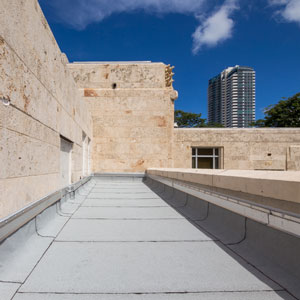by Brianna Crandall — February 19, 2016—Garland, developer of high-performance roofing and building envelope innovations since 1895, introduced in recent months the new OptiMax polyurethane-modified asphalt-based roof membrane, developed with an innovative, patent-pending technology the company says can transform the roofing industry and redefine expectations of building owners and managers in terms of performance and protection.

The OptiMax polyurethane / asphalt roof membrane becomes increasingly resilient as it ages because with time, polyurethane molecules are chemically linked with one another.
Garland’s groundbreaking process combines asphalt with polyurethane to create what the company says is the most durable, long-lasting modified membrane on the market. Unlike traditional asphalt membranes, OptiMax becomes increasingly resilient as it ages because with time, polyurethane molecules are chemically linked with one another. The process was first used in Europe in the paving industry, notes Garland.
According to the company, when traditional SBS-modified membranes age, the oils within the membrane heat up and “cook out,” causing cracking and eventually leaking. OptiMax combines two highly effective waterproofing materials – polyurethane and asphalt.
The “active modification” process involves chemically reacting the polyurethane modifier to specific molecules within the asphalt. This modification provides enhanced long-term performance characteristics and weatherability, says Garland.
The product’s performance is further improved by the fact that minerals are more strongly attracted to the polyurethane in the OptiMax membrane. The result is improved adhesion, thus providing superior ultraviolet (UV) protection, reducing the likelihood of cracking and leaking issues common in traditional membranes, says the company.
During advanced surface testing, OptiMax reportedly had fewer cracks when compared to traditional asphalt-modified membranes and retained its tensile strength in the face of damaging UV radiation.





